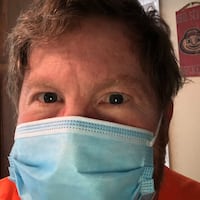The study of use by adults ages 18-34 comes at a time Hamilton and other places are working to lessen drug abuse, particularly among young people. Hamilton Prevention Partners Coalition last year won a $625,000 drug abuse prevention grant for that purpose.
Why were those groups more likely to use marijuana?
“For African-American and multiracial, it’s kind of two-faceted,” Vidourek said. “We have the aspect of they really don’t perceive marijuana as a drug. They don’t look at it like it’s any big deal. It’s really similar to how they perceive tobacco. So that increases their likelihood to use, because they see it as not harmful.”
The sexual and racial minorities also face discrimination and particular stressful life events, “So they’re more likely to use marijuana because of that,” said Vidourek, who is co-director of the UC Center for Prevention Science, part of the College of Education, Criminal Justice, and Human Services.
Some use marijuana because they’re trying to “self-medicate” the stress away, either whether because of the discrimination or because they distrust doctors, Vidourek said.
“We want them to be comfortable reaching out to the medical community,” she said. “We want them to be able to have that relationship with their health-care provider so they can get the help and the treatment they need, rather than rely on marijuana to ease whatever pain they may be suffering from.”
The UC study used data from the National Survey on Drug Use and Health from 2015-2018, a period when several additional states legalized medical marijuana, including Ohio in 2016. With the legalizations, use by adults climbed, such as in Colorado, which legalized recreational use of marijuana in 2012. Two years later the usage rate was 13.6 percent. By 2019, usage was 19.0 percent, she said.
Kristina Latta-Landefeld is director of community programs for Envision Partnerships, which provides staff for programs that work to reduce suicides, drug abuse and improve health of area residents.
Latta-Landefeld said community beliefs about the harmlessness of marijuana seem to be loosening, partly because of frequent local radio ads promoting going online to order medical marijuana, “normalizing” its use.
Ohioans now can legally buy marijuana products that have levels of THC, which gives people a high that are “much, much, much higher than even let’s say the joints of the 1970s,” Latta-Landefeld said.
THC not only causes the high, but also can harm mental health, especially in undeveloped brains, by deadening a person’s emotions and lessening the good feelings they can receive from such simple acts as hugs, or running a race and winning, Latta-Landefeld said.
In helping curb use of marijuana and other illegal drugs, Vidourek recommends health providers, teachers, guidance counselors and parents pay close attention to people in the groups at higher risk of use, especially during stressful times.
“Even if you’re 18 years old, parents can have a huge impact,” Vidourek said. “And they are usually in the know.”
She also recommends health-care providers “ask the questions about whether they’re using marijuana, about whether there are stressful life events going on,” Vidourek said. “And then if they’re saying they’re stressed or feeling discriminated against, or whatever their issue is, then that light bulb can go off and the doctor can screen them for negative coping skills and refer them to receiving proper treatment.”
Dr. Quinton Moss, who operates Modern Psychiatry & Wellness in Hamilton and West Chester, also recently recommended to stae Rep. Sara Carruther’s an Ohio House committee more training for doctors, pastors, educators and others in dealing with such issues.
Given the loosening of marijuana laws state by state, Vidourek plans to continue tracking marijuana through time to see how its use changes among average Americans.
Meanwhile, Latta-Landefeld has seen another alarming trend locally: “We’re hearing through different school districts that kids are showing up with vapes (electronic-cigarettes), or even being caught using them, as young as third grade.”
About the Author
